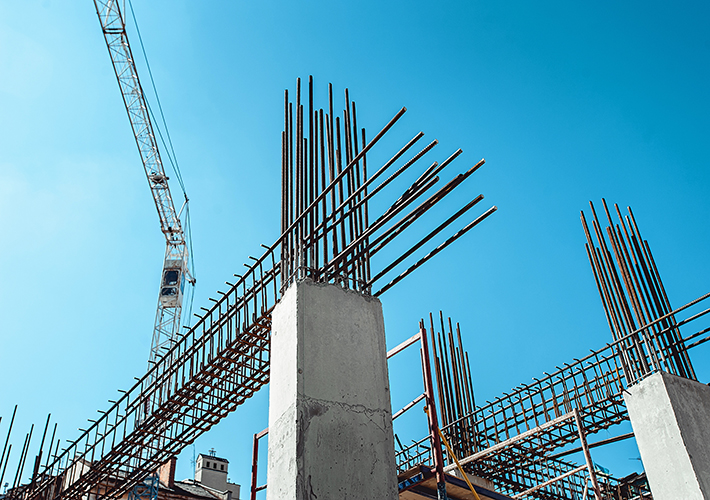
A Partnership to Advance Concrete
When looking at partnerships between ASTM International committees and other organizations, the one between the American Concrete Institute (ACI) and the committee on concrete and concrete aggregates (C09) stands out as being uniquely strong.
The partnership spans decades and is noted in the C09 committee’s scope statement. In fact, the relationship between the two organizations has grown to include other committees as well, such as the committee on steel, stainless steel, and related alloys (A01).
Crucial industry documents — such as the recently-revised Building Code Requirements for Structural Concrete and Commentary (ACI 318) — simply couldn’t exist without the ACI-ASTM International synergy.
READ MORE: Construction Standards: Supporting the Building Industry
The Partnership
As David Darwin, Ph.D., P.E., a longtime ASTM International member and a former ACI president, puts it, “We have members on both groups, and the communication is excellent.”
That ongoing dialogue is undergirded by the C09 committee scope, which notes, “In accordance with an agreement between ASTM and the American Concrete Institute (ACI), ACI will refrain from specification writing for ‘over-the-counter’ engineering materials and ASTM will refrain from standardization efforts in design and construction practice.” (A 1936 excerpt from the division of responsibility for standards, recorded Feb. 24 in the ACI board of direction minutes, carries similar wording.)
Michael Tholen, ACI’s managing director of engineering and professional development, notes that the two organizations have a constant interplay that is mutually beneficial. For example, when one of the organizations needs a standard and the other either does not want to pursue that standard or lacks the resources to do so, “One organization will develop the initial standard and then transfer upkeep to the other organization at a time that’s appropriate for both organizations,” Tholen says. “This agreement helps avoid conflicts that might arise between the two organizations, but more importantly, helps avoid duplication of effort on the part of our volunteer members, many of which are active members of both organizations.”

And while industry representatives point to a few bumps along the way, the productive synergy continues. Most recently, the newly published revision to ACI 318 references close to 60 ASTM International standards (including those from groups like the steel reinforcement subcommittee), and more than two dozen ASTM International standards now reference ACI 318.
ACI 318
Why is ACI 318 so important?
ACI 318 is a globally respected reinforced concrete design code that covers minimum requirements for the materials, design, and detailing of structural concrete buildings. Among other things, “ACI 318 is the reinforced concrete design standard for the United States,” says Tholen.
Darwin, chair of the civil, environmental, and architectural engineering department at the University of Kansas, adds that ACI 318 has been adopted as part of the International Building Code, with Spanish-language and metric versions available.
Put simply, “ACI 318 covers all aspects of reinforced concrete design,” Darwin says. “It is the most important document published by the American Concrete Institute.”
The earliest version of the code was published in 1910. Today, its 600+ pages follow “the process and chronology of design and construction” with 27 chapters, three appendices, and an index.
The ASTM International standards referenced in the code mainly address material properties and test methods.
For example, the revision updates seismic design and deep foundations provisions and adds shotcrete. Also in the new version, the code notably allows concrete design to use less steel because stronger reinforcing elements can be specified. Relevant ASTM International steel standards have now also been revised to include the higher strength metal.
Supporting Standards
Supporting the ACI 318 code’s incorporation of higher strength reinforcing steel for more applications are standards from the ASTM International committee on steel, stainless steel, and related alloys (A01). With standards such as the specification for deformed and plain carbon-steel bars for concrete reinforcement (A615/A615M), higher strength metals in grades 80 and 100 have been added to the 40 and 60 grades (higher numbers indicate greater strengths).
Practically speaking, Darwin explains, “As you go to higher strength steel you can reduce the size of the bars or the numbers of bars” while still ensuring that structures are safe and serviceable. Placing concrete between the bars is easier and construction is more efficient as well, he adds.
Other standards cited in the code specify various types of steel bars and wire that reinforce concrete. Of course, the longstanding standards from the C09 committee continue to serve a crucial function in ACI 318.
For example, a practice for the labs testing concrete and concrete aggregates for use in construction and criteria for testing lab evaluation (C1077) is central to testing concrete that goes into buildings and other structures. The standard identifies and defines what testing agency employees should be responsible for as well as minimum technical requirements for concrete testing equipment.
Jan Prowell, director of the Cement and Concrete Reference Laboratory (CCRL), puts it this way: “C1077 is the basis for most concrete testing.”
From there, ACI 318, like CCRL, relies on the standard for sampling freshly mixed concrete (C172/C172M), which describes how to gather samples that will be used for other tests such as compressive strength (C39), air content (C173 and C231), density (C138), slump (C143), and more.
Furthering the Partnership
The ACI and ASTM International partnership has grown to extend to other programs as well.
Tholen says, “There is now a significant amount of collaboration between the two organizations. Not only do we reference ASTM standards in nearly all of our documents, we also have educational and certification programs that make significant use of ASTM standards. Many of our certification programs are based on ASTM test methods.”
In addition, CCRL offers both the ACI performance and cement performance exams, certifications widely used in the field to demonstrate technician capabilities.
Through the professionals who are members of both organizations, the partnership continues on behalf of all those who use reinforced concrete.
Partnerships and standards help advance the concrete industry, and together will build on success by supporting innovation and more.
 SN Home
SN Home Archive
Archive Advertisers
Advertisers Masthead
Masthead RateCard
RateCard Subscribe
Subscribe Email Editor
Email Editor